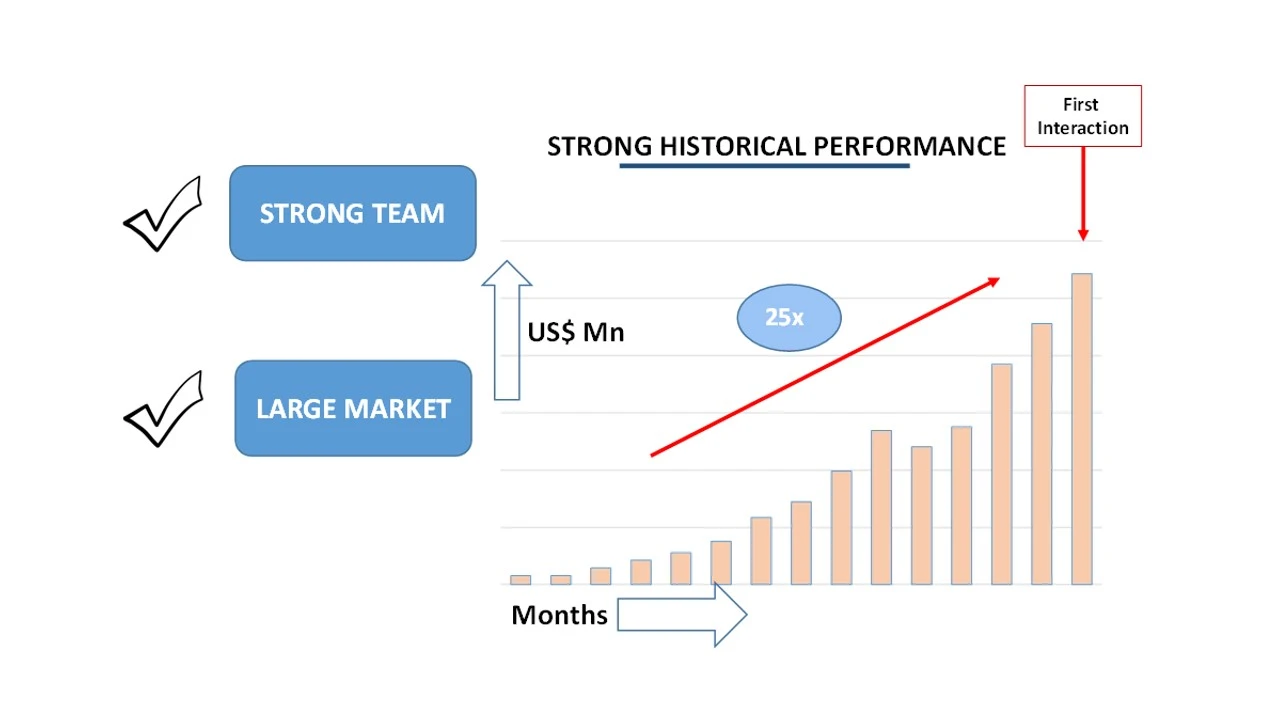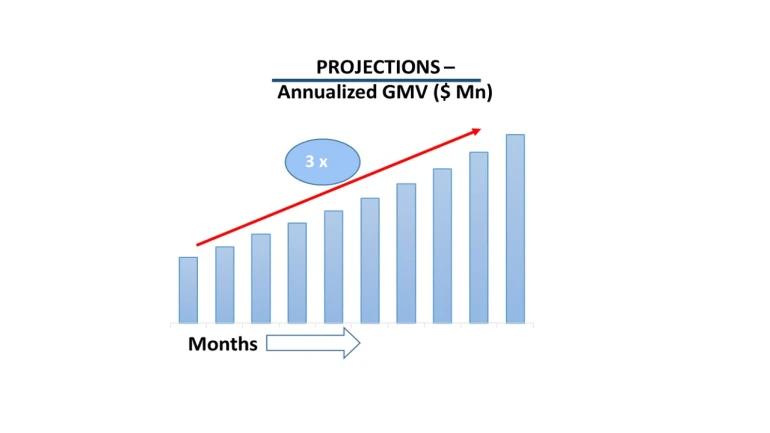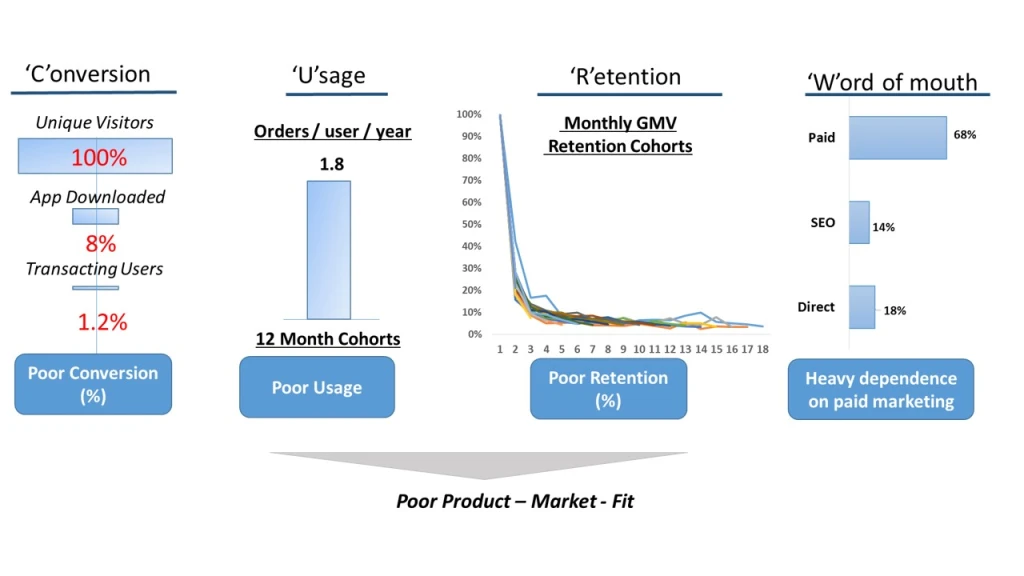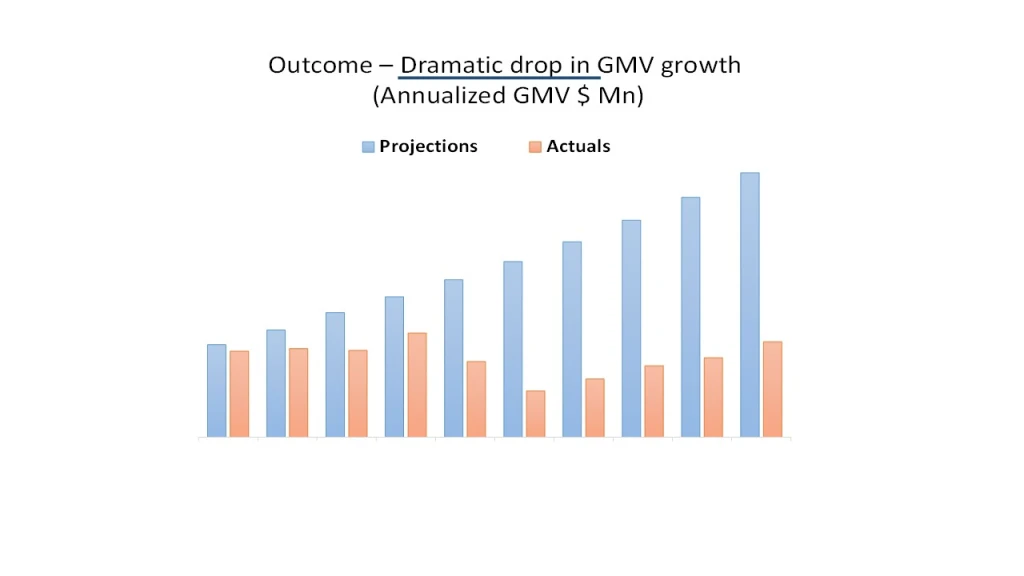Learning from Failure (Part 1) – ‘Growing without Product-Market
Fit’
“Failure is life’s best teacher” – while a lot has been shared about
the reasons for startup success, but to my surprise, not a lot has
been shared about the reasons for failure. I believe the ‘mistakes’
of the past can be a treasure for a budding entrepreneur. Also, I,
as an investor, have been most valuable (or so I believe!) to
entrepreneurs while sharing failed initiatives/strategies or
thoughts on ‘What NOT to do?’ rather than ‘What to do’? – While no
two startup paths are alike, I have found that smart entrepreneurs
extract relevant learning and course correct.
In the spirit of making some of the ‘mistakes’ well-known, I expect
to capture through the ‘Learning from Failure’ series some of the
obvious ‘mistakes’ – ‘Growing without Product-Market fit’ (part 1),
‘The Inconsistent Value Chain’ (part 2 coming soon), ‘Capital
allocation – invest behind growing the Moat’ etc – while far from
comprehensive, the aim here is to create a valuable repository of
startup mistakes.
The following is a story of a B2C marketplace business that was in
‘hyper growth’ mode till it flew off a cliff. The company was
founded by a stellar team that came from some of the leading global
internet companies and was backed by marquee venture capital funds.
Following are the four key metrics – I often call it the ‘CURW’
(pronounced at CURVE) framework- the acronym is born out of the
first letter of each of the four metrics. (While evaluating the
‘product – market fit’ for a company, I often question if the
company is ‘CURW’ing in the right direction?)
Growing at Breakneck Speed…..
My first meeting with the entrepreneur had me salivating! – the
market opportunity was large and under-penetrated, the founding team
had developed a solid product, developed a strong fund raising pitch
and most impressively GMV growth was off the charts – to the extent
that, I had not witnessed such growth before! The company had grown
25x over the last 12 months to a multi-million dollar GMV run rate.
The projections were equally aggressive and if historical
performance was any judge of future performance, the company was
well on its path to beat projections.
Double clicking on the quality Product-Market-Fit
While the growth looked exciting, I ended up double clicking on
strength of the product-market fit using the ‘CURW’ framework (More
about the framework here –
https://thenetwortheffect.com/2018/02/19/measuring-product-market-fit-is-your-startup-curwing-in-the-right-direction/)
-
Conversion (%) and Conversion (%) trend
- poor conversion (%) and more importantly, reducing conversion(%)
trend was worrying – it implied that the company was heavily
dependent on growing traffic to keep the growth engine firing and
also, the ‘funnel leakage’ meant lack of consumer trust on the
platform. In order to keep Consumer Acquisition Co (CAC)st low the
company needed to significantly grow organic traffic to the
platform.
-
Usage
- the usage on the platform was low at 1.8x transactions per
customer per year. For a low AoV product and frequent use case in
the offline world, this number was a concern.
-
Retention
- customers were not sticky and the platform was heavily dependent
on new customers to keep growth humming.
-
Word of Mouth
- share of paid customer acquisition was high. Any change in
competitive spending would have spiked consumer acquisition cost –
at low conversion (%) a small increase in cost of traffic can
cause a huge spike in consumer acquisition cost.
Poor ‘Product-Market-Fit’ So what?
Following are some of the answers I hear in response to a poor PMF –
-
How does it matter?
- Product Market Fit is a reflection of two important things (a)
Measures customer love – how badly does customers want the product
and advocate your product to others? (b) Capital Efficiency –
early reflection of how the Unit Economics of the business are
going to shape up. In the above case, low conversion rate(%),
heavy dependence on paid marketing, low retention (high churn) and
poor usage metrics point towards a long CAC payback period and low
Customer Life Time Value (CLTV). A long CAC payback period implies
high cash burn while low CLTV/CAC ratio means poor profitability!
-
We are market leaders
- being the market leader for the sake of it has little meaning!
(apart from bragging rights) Key question is the impact of
category leadership on customer switching & acquisition cost and
the company cost structure? – With no switching costs coupled with
little economies of scale, category leadership had no real benefit
for the platform.
-
We can alter ‘PMF at scale’
- chasing PMF at scale is excruciatingly difficult and painful.
The number of battles an entrepreneur can fight at any point of
time is limited but with pushing out proving ‘PMF at scale’
approach results in a multi-enemy war – high cash burn, reduce
growth targets to cut burn, harder to raise capital, potential
down rounds, finding it difficult to hire/retain high quality
talent, customer churn at scale making growth even harder,
competition with better PMF raises capital! In my limited
experience, this has been extremely hard to solve for and a big
reason for the same is the following point. High valuation adds
‘fuel to the fire’ – ‘a large capital raise at a steep valuation’
is just what the doctor ordered at this point or maybe not! The
large fund raise can hide all challenges with regards to the poor
PMF and can help the entrepreneur continue to chase lofty growth
targets – this is further pushed by the incoming investor who just
invested with continued expectations of high growth. At this
point, the entrepreneur finds it extremely tough to change course
– the focus has now changed from solving the customer problem to
chasing the next fund raise!
Outcome
To complete the story, the company soon found it very difficult to
sustain high growth given the high cash burn and fleeing customers.
New and existing investors found it very difficult to support the
company beyond a point. The entrepreneur cut growth to increase life
and eventually sold the company for less than cash invested.
To Summarize -
- Rapid Growth Does Not Equal To Product Market Fit
-
Focus on defining, tracking and improving key metrics that prove
strong product-market fit
- Solving for PMF at scale is 100x more difficult
-
Market Leadership for the sake of it has little or no meaning –
does leadership impact customer switching cost or reduce operating
cost?
-
If your ‘CURW’ metrics are strong, please do give me a shout!
- Everything starts from nothing!






